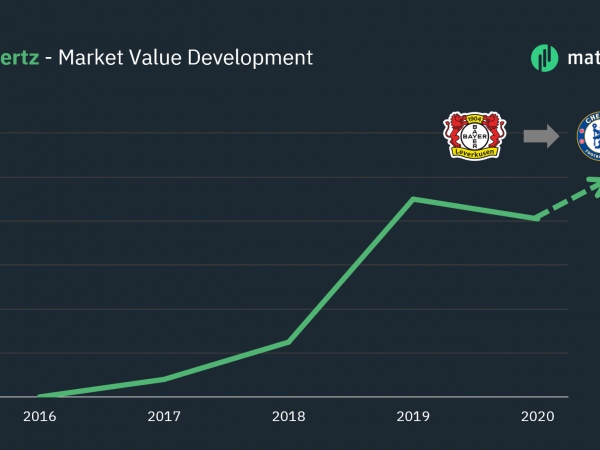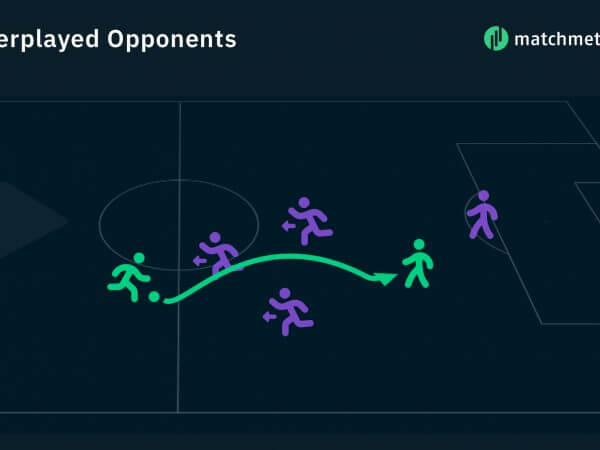written by Michael Markefka
Scoutpanel provides a rating for a player’s stability. This describes how much the single match performances deviate from the player’s performance average for the selected time frame. Even without this specific explanation you probably had an intuitive assumption of what this rating is supposed to mean.
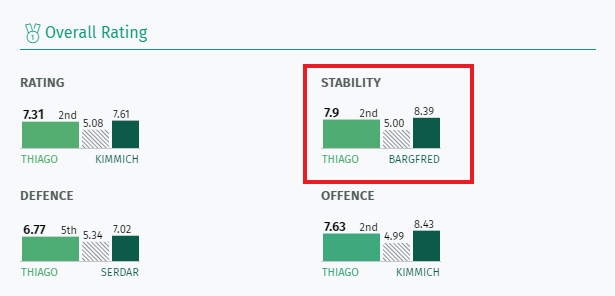
And for most of us, at first it would be a reasonable expectation to think that a high stability is good, with the player being a more consistent performer. Who doesn’t want his players to be on song? But, is a low stability necessarily bad? That depends. On the player’s rating, his age, his position, his purpose within the team. Let’s explore a few cases.
For example, consider Florian Grillitsch, as a midfielder at Hoffenheim:

His overall rating puts him at a very average performance level for the Bundesliga, but he’s a very consistent performer with a stability rating of 7.72 after having played 1,886 minutes. If you are looking for a reliable worker in midfield, who also functions in stabilizing the team as he delivers on a very similar level for every matchday, this kind of player could be of interest to you. And his history graph paints the corresponding picture:

Especially looking at the green line that depicts his overall rating, it seems fairly flat, without pronounced peaks. The best performances seem to have been in the region of a 7, while most of them hover around 5.
We could compare him now to someone like Denis Zakaria.

His overall rating is slightly higher, with the stability being a lot lower than that of Grillitsch. So let’s take a look at the line graph.

And here you can see a few swings in form, with one rather dramatic dip in his match against Hertha. But you can also see three matches being rated around a 9, a bunch around 8, rounded out by some more performances all over the place.
So Zakaria’s bad performances are worse than those of Grillitsch. But his good performances are also a lot better. What we see here is that Zakaria’s performance ceiling, the maximum level he’s able to perform at, seems to be higher, even if he does not provide the same consistency. Grillitsch’s performance stability might indicate though that there may be only little room for growth left as he has settled on his level.
So which one is better? That depends. This is where your idea of what kind of player you are looking for comes in. For young players, it might be more interesting to have higher potential. For older players you might be interested in consistency. For a creative winger you might be willing to take the occasional slump that comes before or after flashes of brilliance. It’s unlikely you would be willing to accept that in a centre-back.
Our system also provides very interesting examples for young wingers. Let’s consider Calvin Stengs of AZ to drive this point about stability home.

Solid, but not spectacular overall rating. And slightly above average in stability, but not exceptional either. But let’s take a look at his line graph.
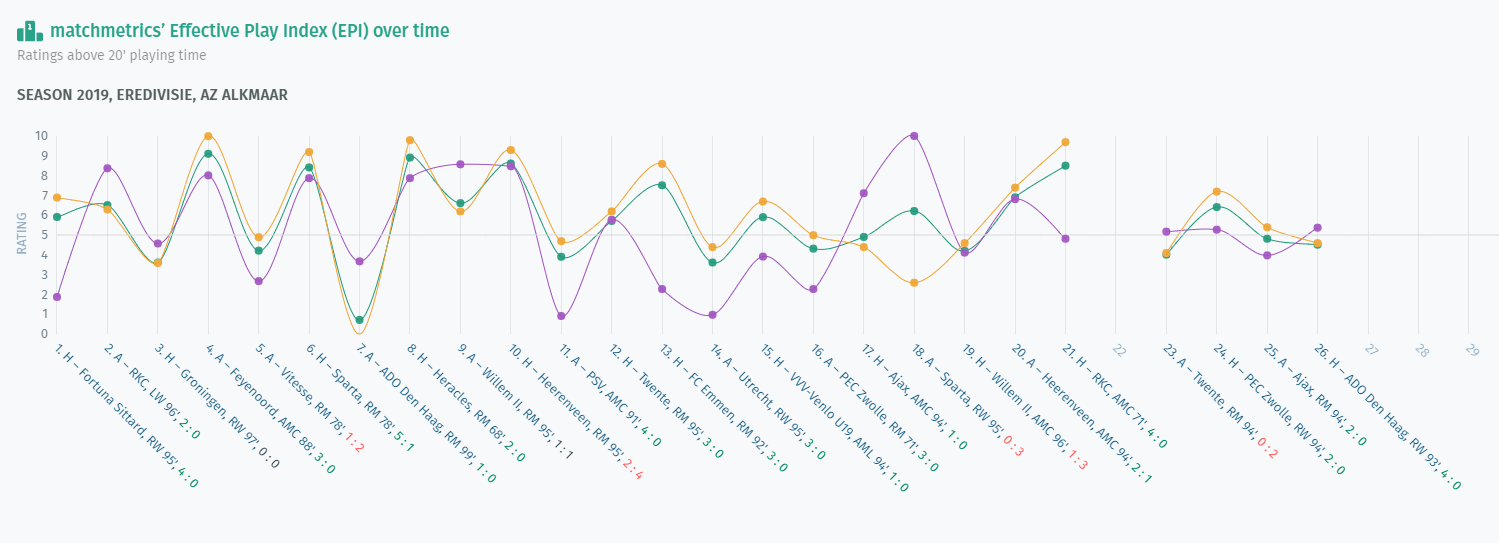
Now, this looks like a sine wave. There are matches where he failed to provide much value on the pitch, but then there are also a number of matches where he performed in the region between 9 and 10. He has shown what he can do in a single match. The coming task would then be for him to develop to a point where he performs like that in every match.
But that doesn’t mean that every exciting player has to be a bit of a gamble in squad selection. For example Neymar is very stable at a high level, as can be seen in his season trajectory.
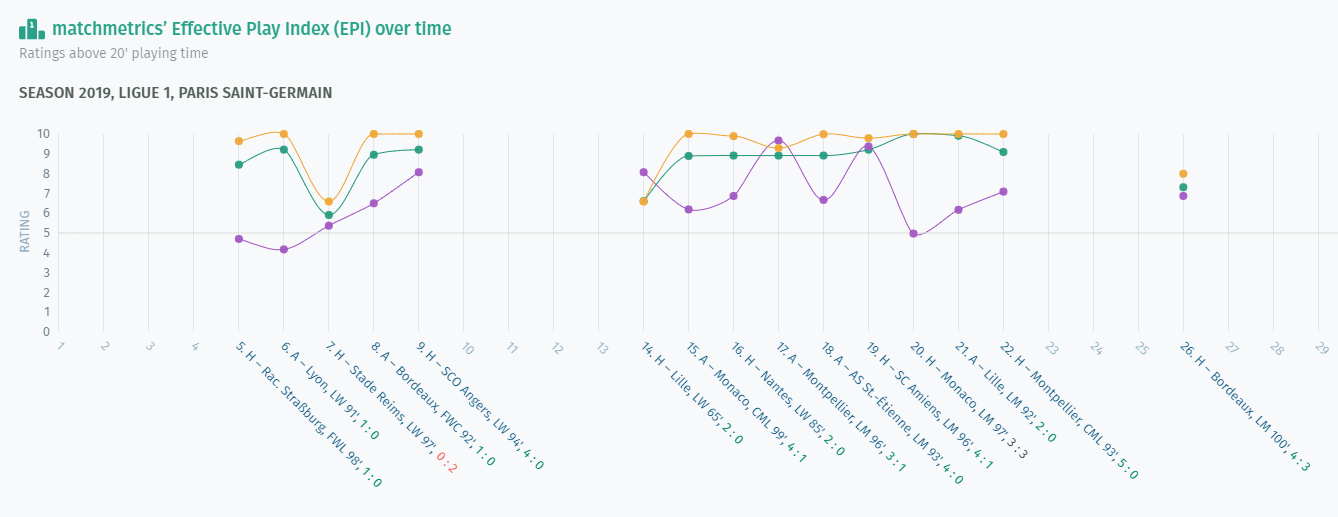
But who can afford a player of that level? Barely anyone. Right now perhaps no one.
And maybe you don’t need to, with a bit of patience and the right circumstances.
If you are looking for talent, and not the finished article, and if you are willing to accept the drawbacks that come with youth, and a lack of experience, for a future payoff, try limiting the upper bound of the stability rating in Scoutpanel. You might find someone interesting.

